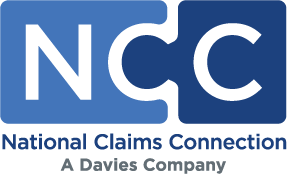
This article was written by ACM/NCC President Dhara Patel and appeared in the Sept. – Oct. 2021 issue of Claims Magazine.
There’s a saying, “Never let a good crisis go to waste.” In our line of work, it sometimes takes an emergency to trigger innovation. The pandemic taught us that claims departments have repeatable processes that lend themselves to automation. The resulting productivity gains can be exponential, but this commitment to automation requires a different skill set, one found in younger technology natives.
Claims overload
The pandemic forced businesses to reduce hours and services, and in worst cases, close altogether. Consumers felt the impact, suddenly having to change or cancel their plans. A hospitality program of ours with multiple locations was flooded with claims from potential guests who sought refunds. How many claims? About 125,000 compared to an average of 10,000 in a normal season. We were suddenly faced with a challenge: how to close an overwhelming number of claims in a very short time.
We’ve dabbled in process automation, but this pushed us into the deep end of the pool. We were thrust into survival mode and had no choice but to find a solution. It quickly became apparent that we wouldn’t be able to hire enough adjusters, train them to do the work and manage them. So instead we asked ourselves,“What can be automated? How can we use machine learning?”
The solution was two-pronged: Find the people and develop a digital tool. Within weeks we recruited recent college graduates and students remotely and used technology to bring them together and train them to use the new tool.
Meet your new co-worker: the robot
Our parent company, Brown & Brown, worked with us to develop a machine learning robot to help expedite the claims process. When a policyholder files a claim, the robot looks for keywords and says, “Ok, you’re filing a claim because of this,” then advances the claim to the next step, triggering a pre-written text or email to the policyholder that says, “We received your claim. Now here’s what we need from you, and here’s where you send it.” When the requested documentation arrives, we use optical character recognition (OCR) technology to read the document and confirm if the contents match what we’re looking for. If so, the claim is advanced directly to processing.
If the documentation doesn’t fit the model, it’s sent back to the robot, which is programmed to learn on the go, with a message that says, “Next time this type of documentation arrives, respond this way instead.”
We’ve reduced the scope of human involvement and the time needed to process a routine claim. In the past, even the simplest claim would involve sometimes tedious communication between the adjuster and the policyholder: phone calls, voicemails, email, maybe even a letter or two. Now, we can close a claim in 24-48 hours because much of the automation is built into the robotic processes. We went from manually processing 50 claims per day to 1000-plus per day and successfully closed that hospitality client’s file which consisted of 125,000 claims.
Buy or build insurance claims technology?
Since the dawn of InsurTech, people have asked whether it’s better to buy a solution off the shelf or build it from scratch. The answer lies somewhere in between. We take the best of what InsurTech has to offer and adapt it to our needs.
Cost is another consideration and depending on the task, sometimes engineering a solution in-house is the best option.
Workforce of the future
The collective talent across our industry is diminishing as claims professionals retire, but that doesn’t have to be a negative. Technology is becoming a bigger part of the equation and that forces us to adjust our requirements. Finding and hiring adjusters with 15-20 years of experience is no longer sustainable, so organizations must think outside the box. And technology must play a bigger role in what (and whom) we’re looking for.
At its peak, we had over 70 people processing claims for the hospitality program — individuals we had never met in person. We were able to manage the team virtually, thanks to our newly built process automation tool along with more common tools like Teams, video chats and screen sharing. While that wasn’t normal 18 months ago, it is now, resulting in a more balanced workforce.
The current job market is forcing employers to adjust job descriptions, compensation and benefits. There’s a generation that wants a work-life balance. With process automation, we can make each employee more efficient and with flexible hours, they can work from home while gaining time and versatility.
Automation also enriches the human touch. It allows us to take work off a person’s desk so they can focus on the customer experience and on making people whole again — especially those people who are displaced after a disaster. We never want to replace human interaction when it comes to a loss, whether it’s a flooded home or a large business interruption claim. All losses are personal.
Another advantage of process automation is the ability to staff up in a crisis. If, say, a massive hurricane hits the Gulf Coast, we can recruit and hire staff almost instantly from anywhere in the world. They don’t have to sit in our office or be located at the scene of a disaster.
Yes, the pandemic was scary because it forced us to do things we weren’t comfortable doing. We learned that processing a massive surge in claims by hand just isn’t possible, and we were forced to quickly adopt a digital solution. Having completed a successful project with a true customer benefit, we’ve emerged from the crisis and proven to ourselves that anything is possible.

